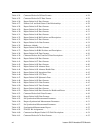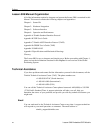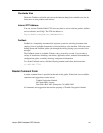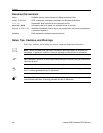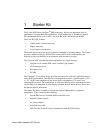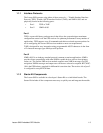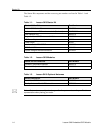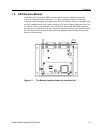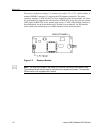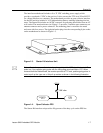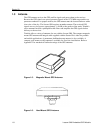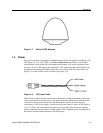
1-2 Lassen-SK8 Embedded GPS Module
Starter Kit
The interface unit is a sturdy metal enclosure containing an interface motherboard. The
motherboard accepts 9 - 32 VDC power and provides regulated +5V and +3.6V BBU
power to the Lassen-SK8 receiver module. The motherboard also provides two RS-232
connectors for quick and direct connection to a PC COM port. The Lassen-SK8 board can
be removed from the motherboard for integration into the user's application (see Chapter
2, Hardware Integration).
1.1 Lassen-SK8 Overview
The Lassen-SK8 is a complete 8-channel parallel tracking GPS receiver designed to
operate with the L1 frequency, Standard Position Service, Coarse Acquisition code. Using
two highly integrated Trimble custom integrated circuits, the receiver is designed in a
modular format especially suited for embedded applications. The Lassen-SK8 features
Trimble's latest signal processing code, a high-gain RF section for compatibility with
standard 25 dB active gain GPS antennas, and a CMOS TTL level pulse-per-second (PPS)
output for timing applications or as a general purpose synchronization signal
The Lassen-SK8 acquires a position fix with minimal delay after power cycling. The
information necessary to help track satellites is stored in RAM using backup power for the
following:
• Almanac
• Ephemeris
• Real-time clock
• Last position
User settings, including port parameters and receiver processing options, are stored in a
non-volatile electrically erasable ROM (EEROM) that does not require backup power.
The Lassen-SK8 has two independently configurable serial I/O communication ports.
Port1 is a bi-directional control and data port utilizing the Trimble Standard Interface
Protocol (TSIP) or Trimble ASCII interface protocol TAIP. Port 2 is a bi-directional port
used to receive differential GPS (DGPS) corrections in industry standard RTCMSC-104
format and for output of industry standard ASCII NMEA sentences. The dual data I/O port
characteristics and other options are user programmable and stored in non-volatile
memory.
M
Warning – When customizing port assignments or characteristics, confirm that your
changes do not effect your ability to communicate with the receiver module
(see Chapter 3, Software Interface).



